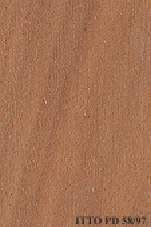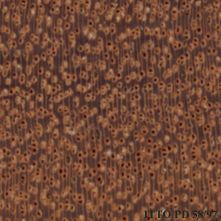
BáLSAMO (Myroxylon balsamum)
Trade Name
Bálsamo
Scientific Name
Myroxylon balsamum (L.) Harms
Family
LEGUMINOSAE
Common Names
Incienso Colorado (Paraguay); Sandalo (Costa Rica); Bálsamo (Brazil); Bálsamo (Venezuela); Quina Quina (Peru); Bálsamo (Peru); Bálsamo (Ecuador); Quina Quina De Yungos (Bolivia); Bálsamo (Bolivia); Sándalo (Ecuador); Santos Mahogany; Palo De Bálsamo; Nabal; Incienso (Paraguay); Chirraca; Cedro Chino; Cabriziva; Estoraque (Peru); Pino De Calabria; Greybark Pine; Bosnian Pine; Tache; Tolú; Quina Quina (Bolivia); Quina (Argentina); Óleo Vermelho (Brazil); Kina; Kina Morado; Kina Kina; Cabreúva Vermelha (Brazil); Cabreúva (Brazil); Caboré; Bálsamo De Tolú; Balsamito; Bálsamo (Colombia)
Scientific Name Synonyms
Toluifera balsamum L.; Myroxylon balsamum var. punctatum (Klotzsch) Harms; Myrospermum toluiferum (A. Rich.) DC.
Description Of The Tree
Botanical Description
This tree is small to medium sized, attaining heights of 15 to 20 m, eventually up to 30 m and diameters of 45 to 90 cm.
Natural Habitat
Myroxylon balsamum is found in the primary and secondary tropical and subtropical forests of America.
Natural Distribution
This species extends over a wide area from southern Mexico southward to Argentina.
Wood Identification
Anatomic Description Of Wood
Wood diffuse porous. Vessels solitary and in short radial multiples. Tangential diameter of vessel lumina 100 to 150 micras (small). Colored deposits in heartwood vessels. Vessels per mm2 10 to 20 (abundant). Simple perforation plates. Vessel-ray pits similar t Paratracheal axial parenchyma scanty and/or vasicentric. Axial parenchyma storied. Occasionally prismatic crystals in non-chambered axial parenchyma cells. Occasionally prismatic crystals in chambered axial parenchyma cells and/or in fibers. Two cells per par Rays more than 10 per mm (abundant). Rays storied. Rays commonly 2 seriate. Prismatic crystals in the ray cells. Body ray cells procumbent with one row of upright and/or square marginal cells (Kribs-III). Fibers with simple to minutely bordered pits.
-
 Wood Macro Photo Tangential Plane
Wood Macro Photo Tangential Plane
-
 Wood Micro Photo Of Transversal Section
Wood Micro Photo Of Transversal Section
Availability
Cites Status
Unrestricted
General Wood Description
Odor
It has a distinct odor, but no special taste.
Color
The sapwood is pale yellow, clearly differentiated. The heartwood is reddish-brown, darkening to deep red after exposure.
COLOR INDEX (1=Black, 7=Light yellow,white)
4
Grain
The grain is interlocked.
Texture
Texture is medium to fine.
Luster
The wood exhibits a medium luster.
Natural Durability
It is rated as highly resistant to attack by decay fungi. It has good resistance to termites and dry wood insects.
Natural durability index (1= Very high durability, 7=Vey low durability)
1
Resistance To Impregnation
This species is impermeable, but for most uses it does not require a preservative treatment.
Wood Physical Properties
Basic Density or Specific Gravity (O.D. weight/vol. green) (g/cm³)
0.84
Air-dry Density (Weight and volume at 12%MC) (g/cm³)
0.96
Total shrinkage Tangential (Saturated to 0%MC) (%)
6.9
Total shrinkage Radial (Saturated to 0%MC) (%)
4.0
Dimensional stability ratio (Total Tangential Shrinkage %/Total Radial Shrinkage %)
1.7
Wood Chemical Properties
Wood Mechanical Properties
Bending Strength (MOR),12%MC (kgf/cm²)
1432
Stiffness (MOE) 12%MC (kgf/cm²)
170077
Compression parallel to fiber 12%MC (kgf/cm²)
793
Compression perpendicular to fiber 12%MC (kgf/cm²)
176
Shear strength radial 12%MC (kgf/cm²)
155
Janka hardness (side) 12%MC (kgf)
1061
Janka hardness (end grain) 12%MC (kgf)
1215
Workability
Sawing
The timber is reported to be moderately difficult to saw because of hardness.
Blunting Effect
Blunting effect on cutters is reported to be moderate.
Machining
All machining operations are rather difficult due to interlocked grain. It responds rather poorly to planing, boring, turning, molding, and mortising operations. For best results, carbide-tipped tools are recommended.
Turning
30
Nailing
Nailing is difficult, pre-boring is recommended.
Sanding
Sanding characteristics are rated as satisfactory.
Polishing
The timber is reported to have excellent polishing characteristics.
Response To Hand Tools
It is a very hard wood, response to hand tools is poor.
REFERENCED USES
End Uses Summary
EXTERIOR GENERAL, crossties, HOUSING GENERAL, boards, flooring, steps, FURNITURE AND CABINETS, PLYWOOD AND VENEER, Decorative veneer, TURNING, SPORTS, TOOLS, tool handles, agricultural tools, CONTAINERS, truck bodies, truck flooring, NAVAL CONSTRUCTION, port pillar
Exterior General
- 1 - Tabela de resultados de ensaios fisicos e mecanicos
Crossties
- 8 - Maderas latinoamericas. III, Podocarpus standleyi ,Podocarpus oleifolius, Drims granadensis, Magnolia poasana y Didymopanax pittieri
General Housing
- 10 - Silica in Timbers
Boards
- 13 - Dry kiln schedules for commercial woods. Temperate and tropical. Section III. Latin American (Mexico, Central, and South America) Woods–Conventional Temperatures
Flooring
- 14 - Handbook of Hardwoods
Steps
- 17 - Tree Conservation Database
Furniture Cabinets
- 21 - Tropical timbers of the world. Part III-Southeast Asian and Oceanian Species.
Panels, Veneers
- 25 - Directory of Timber Trade Malaysia
Decorative veneer
- 28 - Ministry of Agriculture, Fisheries & Forest of Fiji
Turning
- 30 - Embassy of Honduras in Japan
Sports
- 38 - Annual Review and Assessment of the World Timber Situation 1998-ITTO
Tools
- 42 - Utilización Industrial de Nuevas Especies Forestales en el Perú.
Tool Handles
- 43 - Maderas de Bolivia (Características y Usos de 55 Maderas Tropicales)
Agricultural Tools
- 44 - Atlas of Peruvian Woods
Truck Body
- 53 - Timbers of the New World
Truck Flooring
- 54 - Bulletin of the Government Forest Experiment Station N.157: Identification of Tropical Woods
Shipbuilding
- 55 - Tropical Timber Atlas of Latin America
Port Pillar
- 61 - Manual de Diseño para Maderas del Grupo Andino
Please Provide Information To View Producer Information